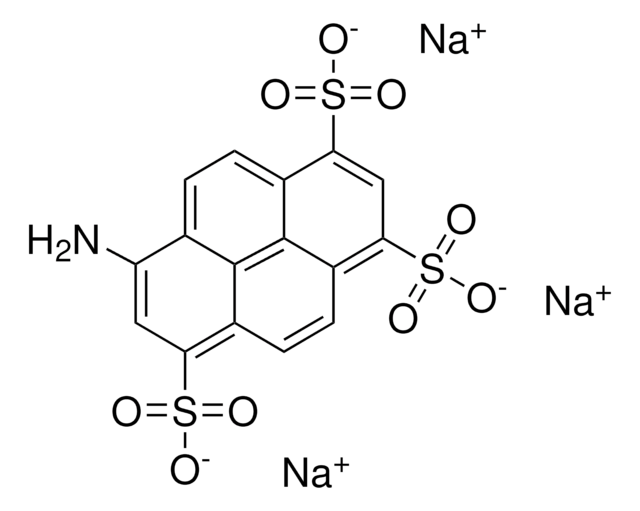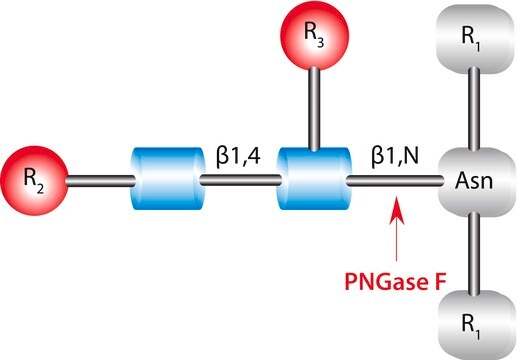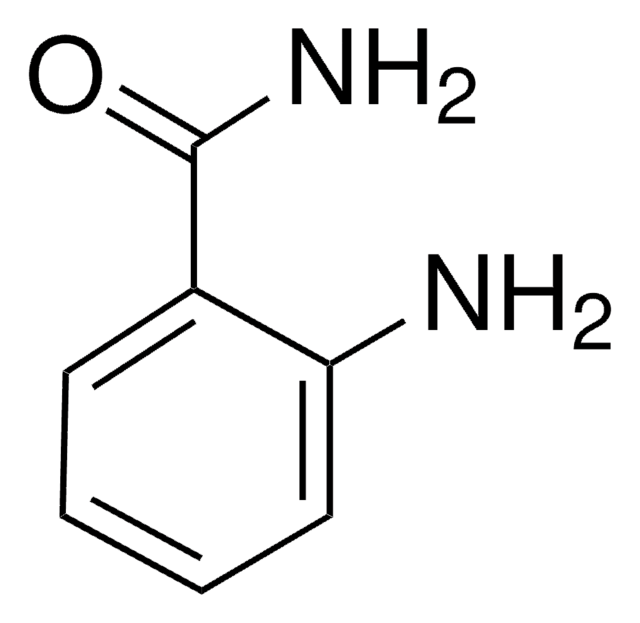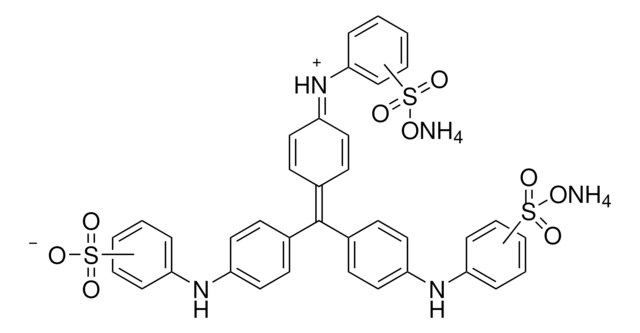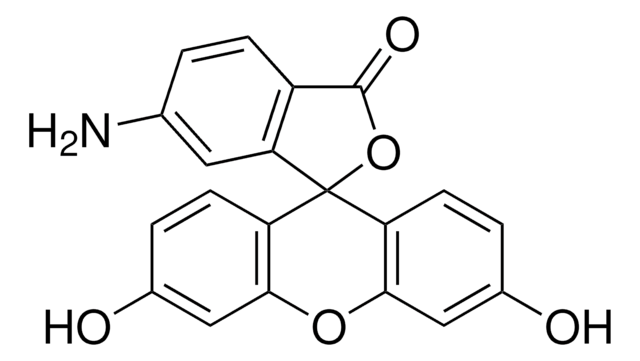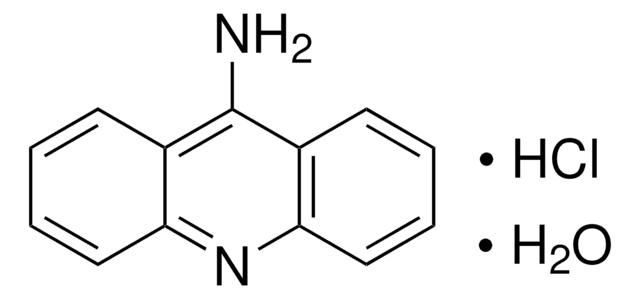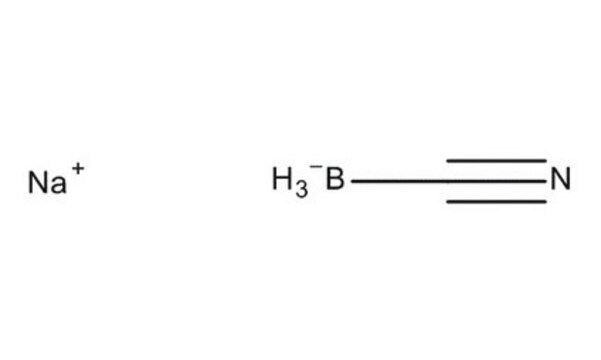06627
2-Aminoacridone
BioReagent, suitable for fluorescence, ≥98.0% (HPLC)
Sinônimo(s):
2-Amino-9(10H)-acridinone, 2-amino-10H-acridin-9-one, AMAC
About This Item
Produtos recomendados
linha de produto
BioReagent
Ensaio
≥98.0% (HPLC)
solubilidade
DMF: soluble
DMSO: soluble
fluorescência
λex 420 nm; λem 542 nm in 0.1 M Tris pH 8.0
adequação
suitable for fluorescence
cadeia de caracteres SMILES
Nc1ccc2Nc3ccccc3C(=O)c2c1
Nc1ccc2Nc3ccccc3C(=O)c2c1
InChI
1S/C13H10N2O/c14-8-5-6-12-10(7-8)13(16)9-3-1-2-4-11(9)15-12/h1-7H,14H2,(H,15,16)
chave InChI
PIGCSKVALLVWKU-UHFFFAOYSA-N
Procurando produtos similares? Visita Guia de comparação de produtos
Categorias relacionadas
Aplicação
Embalagem
Palavra indicadora
Warning
Frases de perigo
Declarações de precaução
Classificações de perigo
Eye Irrit. 2 - Skin Irrit. 2 - STOT SE 3
Órgãos-alvo
Respiratory system
Código de classe de armazenamento
11 - Combustible Solids
Classe de risco de água (WGK)
WGK 3
Ponto de fulgor (°F)
Not applicable
Ponto de fulgor (°C)
Not applicable
Equipamento de proteção individual
dust mask type N95 (US), Eyeshields, Gloves
Escolha uma das versões mais recentes:
Certificados de análise (COA)
Não está vendo a versão correta?
Se precisar de uma versão específica, você pode procurar um certificado específico pelo número do lote ou da remessa.
Já possui este produto?
Encontre a documentação dos produtos que você adquiriu recentemente na biblioteca de documentos.
Os clientes também visualizaram
Artigos
Glycan Labeling
Nossa equipe de cientistas tem experiência em todas as áreas de pesquisa, incluindo Life Sciences, ciência de materiais, síntese química, cromatografia, química analítica e muitas outras.
Entre em contato com a assistência técnica


